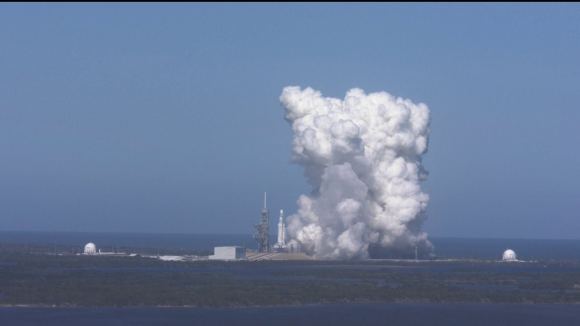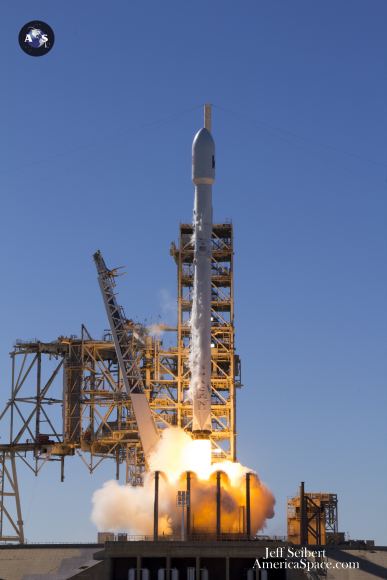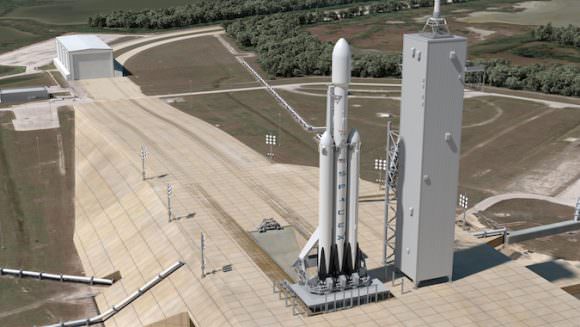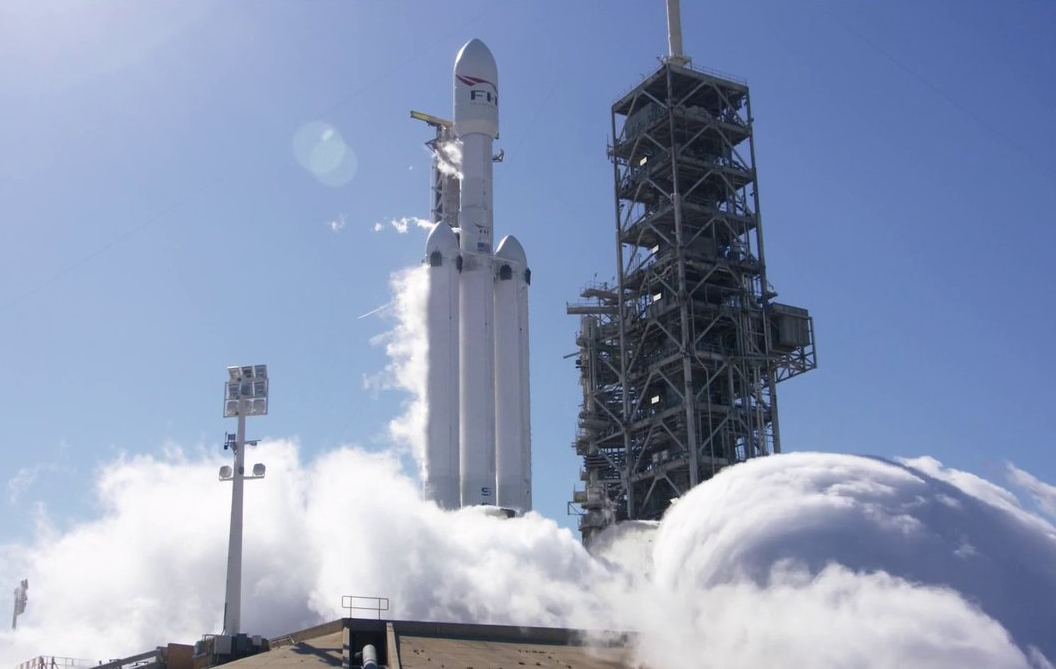The long-awaited Static Fire of SpaceX’s Falcon Heavy rocket has been declared a success by SpaceX founder Elon Musk. After this successful test, the first launch of the Falcon Heavy is imminent, with Musk saying in a Tweet, “Falcon Heavy hold-down firing this morning was good. Generated quite a thunderhead of steam. Launching in a week or so.”
This is a significant milestone for the Falcon Heavy, considering that SpaceX initially thought the Heavy’s first flight would be in 2013. The first launch for the Falcon Heavy has always seemed to be tantalizingly out of reach. If space enthusiasts could’ve willed the thing into space, it would’ve launched years ago. But that’s not how it goes.

Developing rockets like the Falcon Heavy is not a simple matter. Even Musk himself admitted this when he said in July, “At first it sounds real easy: you just stick two first stages on as strap-on boosters. But then everything changes. All the loads change; aerodynamics totally change. You’ve tripled the vibration and acoustics.” So it’s not really a surprise that the Falcon Heavy’s development has seen multiple delays.
After first being announced in 2011, the rocket’s first flight was set for 2013. That date came and went, then in 2015 rocket failures postponed the flight. Failures postponed SpaceX again in 2016. New target dates were set for late 2016, then early 2017, then late 2017. But with this successful test, long-suffering space fans can finally breathe a sigh of relief, and their collective sigh will last about as long as the static fire: only a few seconds.
First static fire test of Falcon Heavy complete—one step closer to first test flight! pic.twitter.com/EZF4JOT8e4
— SpaceX (@SpaceX) January 24, 2018
The Falcon Heavy has a total of 27 individual rocket engines, and all 27 of them were fired in this test, though the Heavy never left the launch pad. For those who don’t know, the Falcon Heavy is based on SpaceX’s successful Falcon 9 rocket, a nine-engine machine that made SpaceX the first commercial space company to visit the International Space Station, when the Falcon 9 delivered SpaceX’s Dragon capsule to the ISS in 2012. Since then, the Falcon has a track record of delivering cargo to the ISS and launching satellites into orbit.
The Heavy is like a Falcon 9 with two more 9-engine boosters strapped on. It will be the most powerful rocket in operation, by a large margin. (It won’t be the most powerful rocket in history though. That title still belongs to the Saturn V rocket, last launched in 1973.)

The Falcon Heavy will create 5 million pounds of thrust at lift-off, and will be able to carry about 140,000 lbs, which is about three times what the Falcon can carry. The Falcon’s engine core is reusable, and returns itself to Earth after detaching from the second stage. The Falcon Heavy will do the same, with all three cores returning to Earth for reuse. The two outer cores will return to the launch pad at Cape Canaveral, and the center core will land on a drone ship in the Atlantic. This is part of the genius behind the SpaceX designs: reusable components keep the cost down.

We aren’t exactly sure when the first launch of the Falcon Heavy will be, and its first launch may be a very short flight. It’s possible that it may only get a few feet off the launch pad. At a conference in July, Musk said, “I hope it makes it far enough beyond the pad so that it does not cause pad damage. I would consider even that a win, to be honest.”
We know a few things about the eventual first launch and flight of the Falcon. There won’t be any scientific or commercial payload on-board. Rather, Musk intends to put his own personal Tesla roadster on-board as payload. If successful, it will be the first car to go on a trip around the Sun. (I call Shotgun!) It’s kind of silly to use a rocket to send a car around the Sun, but it will generate publicity. Not only for SpaceX, but for Tesla too.
If the launch is successful, the Falcon Heavy will be open for business. SpaceX already has some customers lined up for the Falcon Heavy, with a Saudi Arabian communications satellite first in line. After that, its second commercial mission will place several satellites in orbit. The US Air Force will be watching these launches closely, with an eye to using the Falcon Heavy for their own purposes.
But the real strength of the Falcon Heavy is not blasting cars on frivolous trips around the Sun, or placing communications satellites in orbit. Its destination is deep space.
Originally, SpaceX planned to use the Falcon Heavy to send people to Mars in a Dragon capsule. They’ve cancelled that idea, but the Heavy still has the capability to send rovers or other cargo to Mars and beyond. Who knows what uses it will be put to, once it has a track record of success.
We’re all eager to see the successful launch of the Falcon heavy, but while we wait for it, we can enjoy this animation from SpaceX.


I want to see this first hand